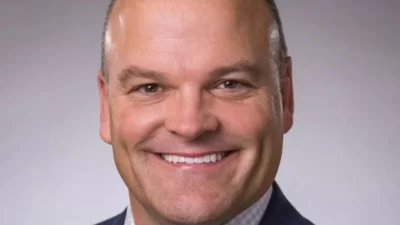Frederick Breathe Free office | Provided
Frederick Breathe Free office | Provided
- Eustachian tubes are slender tubes connecting the middle ears to the upper throat.
- They play a role in balancing ear pressure and draining fluid from the middle ear, which is situated behind the eardrum.
- If you're suffering from ear troubles, it could be a result of eustachian tube dysfunction, caused by sinusitis.
"I'm actually currently the only person performing eustachian tube balloon dilation in all of Frederick, Maryland," Dr. Oberman told Baltimore City Wire. "The eustachian tube is a part of our anatomy that goes from the back of the nose to the middle ear, so it has the same mucosal tissue lining as our paranasal sinuses. So they have the same pathophysiology. The same things that cause inflammation and swelling of the sinuses contributes to dysfunction of the eustachian tube, and the point of the eustachian tube is to allow you to breath through your mouth and nose so you can equalize through ambient environment, so you don't get recurrent infections."
Eustachian tubes are narrow passages that can become obstructed for various reasons, according to Healthline. When these tubes are blocked, it can result in pain, hearing challenges, and a sensation of fullness in the ears, a condition known as eustachian tube dysfunction (ETD).
ETD can arise from allergies, a typical cold, influenza, or chronic acid reflux. Symptoms may intensify during altitude changes, such as on an airplane or during scuba diving, according to Cleveland Clinic. While ETD often resolves spontaneously, if symptoms persist for more than two weeks, seeking advice from a doctor is advisable. At-home remedies for addressing ETD may involve chewing gum, yawning, swallowing, or using a saline nasal spray.
Cleveland Clinic reported that in cases where at-home remedies or medications prove ineffective for addressing ETD, a physician may suggest an in office procedure. One available option is eustachian tuboplasty, also referred to as eustachian tube balloon dilation. This relatively recent procedure entails the insertion of a small balloon through the nasal passage into the eustachian tube, followed by inflation. The balloon is maintained in an inflated state for approximately two minutes before being deflated and removed by the doctor. Typically, patients recover from this surgery within one day or so.
According to Frederick Breathe Free's website, Dr. Oberman obtained his bachelor's degree from Boston College. He then pursued his graduate studies at Tufts Medical School through the Navy Health Professions Scholarship Program, a program akin to ROTC for aspiring medical professionals. Following the completion of medical school, he embarked on a career in the Navy, which continued until his retirement in 2017. Subsequently, he transitioned into the field of comprehensive ear, nose, and throat medicine.


 Alerts Sign-up
Alerts Sign-up